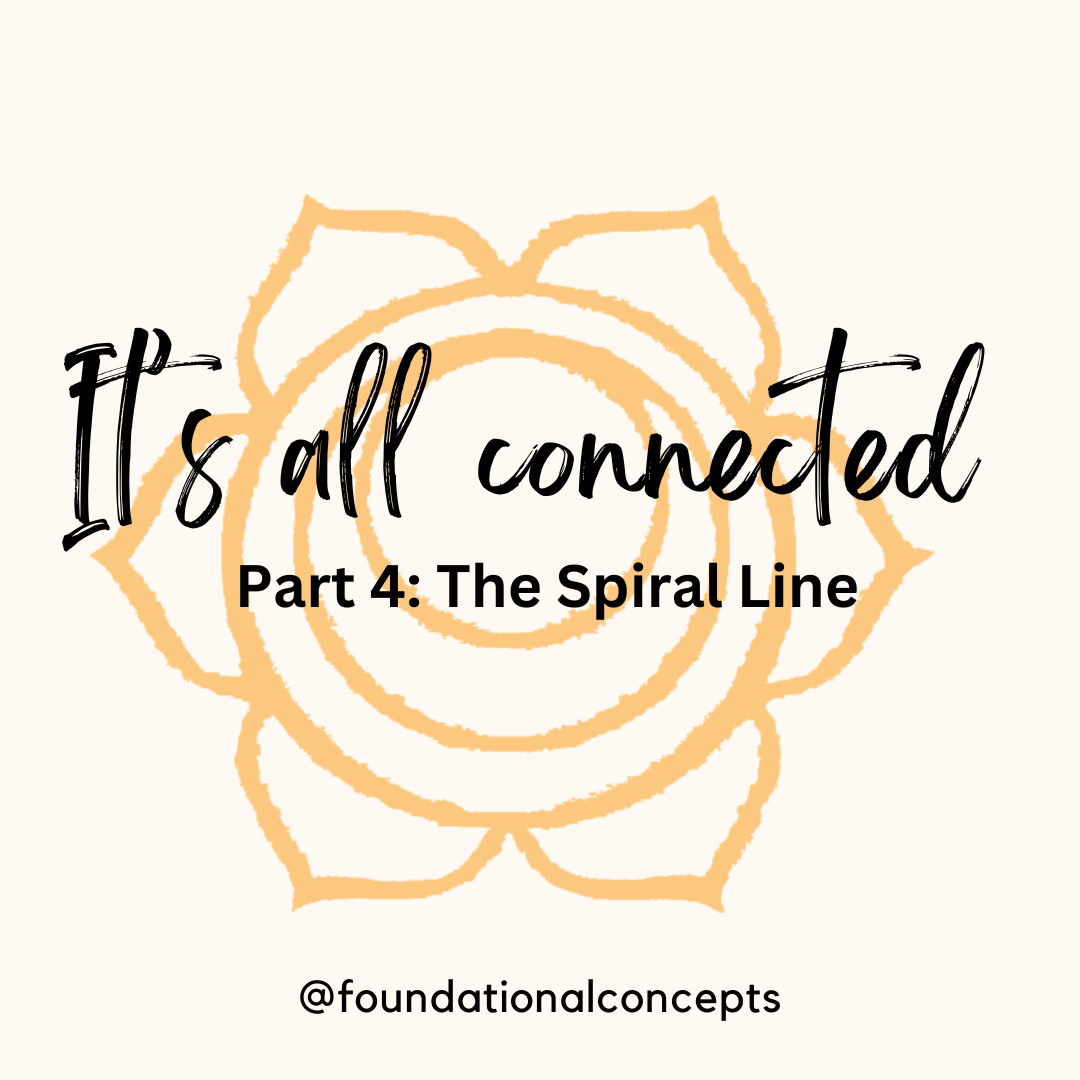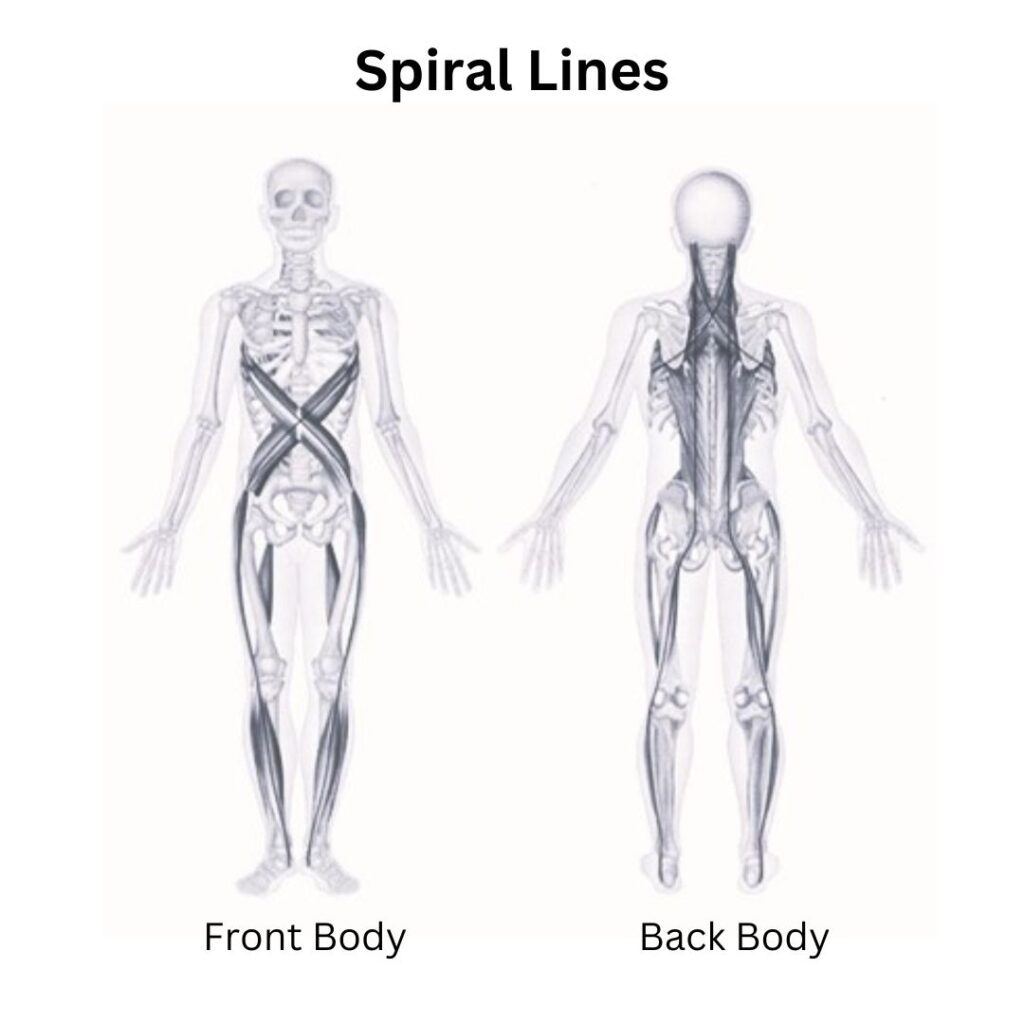
It is all connected: part 4, The Spiral Line
The spiral line is a line of connective tissue that runs from the arch of our feet to the base of
our skull. In the front body, this fascial line travels up and crosses from our left hip to our right ribs and vice
versa. In the back body, it crosses from the left sit bone to the right hip and vice versa. This “X”
pattern joins our left and right sides of our body and gives us support with all the rotations, shifts, and
twists that we need to do during our days. The Spiral Line also helps the body to distribute pressure
forces so that no one part is taking all the force—our body weight doesn’t go straight into our hip or
knee when we are running. It is distributed from our foot to our hip, and across to the opposite side
to spread out the pressure.

Because of the way the connective tissue crosses at our belly button, it also plays a large role in
stability and balance especially when we stand on one leg or when we need to stand on one leg and shift
to the other. This stability in our core gives us a strong foundation for our arms and legs to work from.
It is important to note that this fascial plane is disrupted during pregnancy, abdominal or pelvic
surgeries, hip and knee injuries or surgeries. When you have had a baby, or surgeries the disruption of the fascial plane can shut down our core muscles and cause imbalances in how we recruit the muscles for movement.
This is where it is important to have a pelvic floor physical therapist who understands the fascial planes during your recovery. You have to retrain the muscles, and engage the entire fascial system, to rehabilitate and return safely to exercise and activity. The system is truly amazing, how inter-connected it all is, to allow us to support our bodies and move in the most optimal way. Just from the front of the hip, the Spiral Line has attachments at:
- the internal and external abdominal obliques
- the transverse abdominus
- the pelvic floor muscles
- the inguinal ligament
- the quadriceps and sartorius
- the gluteal muscles
- the tensor fascia latae and ilio-tibial band
This is only examining the attachments in one area! Having someone who understands how these muscles work together is vital to your recovery whether it is pregnancy and delivery, a hernia repair, or a larger surgery. In pelvic floor physical therapy at Foundational Concepts, we see men and women who are experiencing knee or hip pain. When we look deeper, at functional movement assessments and joint special tests, often the joint that is painful is not where the problem originates. Following along the spiral line we find that the issue is further up or down the chain. An imbalance in the shoulder girdle, can greatly impact how well the hip is stabilized. Or, weakness and instability at the foot and ankle will greatly impact our knee stability, hip stability and even how well our shoulder girdle is able to function for tasks like throwing, lifting or hitting a volleyball.
When the full body is examined from head to toe, rehabilitation is a successful process that is enjoyable and educational! As pelvic floor physical therapists, we work together with our clients to build the best treatment plan. Having a skilled physical therapist who will create an individual plan specifically for your needs is key to recovery.

